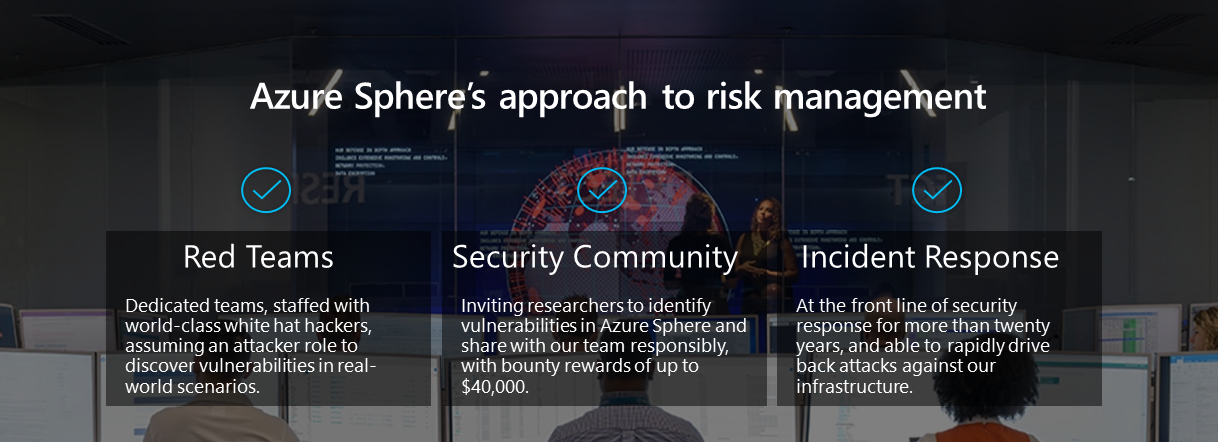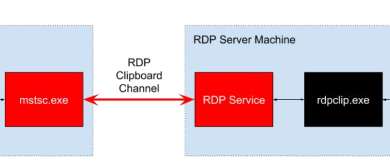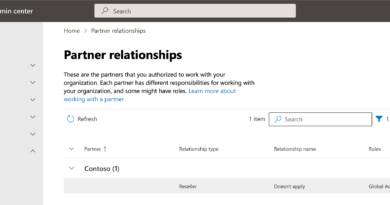Managing risk in today’s IoT landscape: not a one-and-done
The reality of securing IoT over time
It’s difficult to imagine any aspect of everyday life that isn’t affected by the influence of connectivity. The number of businesses that are using IoT is growing at a fast pace. By 2021, approximately 94 percent of businesses will be using IoT. Connectivity empowers organizations to unlock the full potential of the Internet of Things (IoT)—but it also introduces new cybersecurity attack vectors that they didn’t need to think about before. The reality is, connectivity comes at a cost: attackers with a wide range of motivations and skills are on the hunt, eager to exploit vulnerabilities or weak links in IoT. What does it take to manage those risks?
The cybersecurity threat landscape is ever evolving so a solution’s protection must also evolve regularly in order to remain effective. Securing a device is neither a one-time action nor is it a problem that is solely technical in nature. Implementing robust security measures upfront is not enough—risks need to be mitigated not just once, but constantly and throughout the full lifespan of a device. Facing this threat landscape ultimately means acknowledging that organizations will have to confront the consequences of attacks and newfound vulnerabilities. The question is, how to manage those risks beyond the technical measures that are in place?
A holistic approach to minimizing risk
Securing IoT devices against cyberattacks requires a holistic approach that complements up-front technical measures with ongoing practices that allow organizations to evaluate risks and establish a set of actions and policies that minimize threats over time. Cybersecurity is a multi-dimensional issue that requires the provider of an IoT solution to take several variables into account—it is not just the technology, but also the people who create and manage a product and the processes and practices they put in place, that will determine how resilient it is.
With Azure Sphere, we provide our customers with a robust defense that utilizes the evidence and learnings documented in the Seven Properties of Highly Secured Devices. One of the properties, renewable security, ensures that a device can update to a more secure state even after it has been compromised. As the threat landscape evolves, renewable security also enables us to counter new attack vectors through updates. This is essential, but not sufficient on its own. Our technology investments are enhanced through similar investments in security assurance and risk management that permeate all levels of an organization. The following sections highlight three key elements of our holistic approach to IoT security: continuous evaluation of our security promise, leveraging the power of the security community, and combining cyber and organizational resilience.
Continuous evaluation of our security promise
All cyberattacks fall somewhere on a spectrum of complexity. On one side of the spectrum are simple and opportunistic attacks. Examples are off-the-shelf malware or attempts to steal data such as credentials. These attacks are usually performed by attackers with limited resources. On the opposite side of the spectrum are threat actors that use highly sophisticated methods to target specific parts of the system. Attackers within this category usually have many resources and can pursue an attack over a longer period of time. Given the multitude of threats across this spectrum, it is important to keep in mind that they all have one thing in common: an attacker faces relatively low risk with potentially very large rewards.
Taking this into account, we believe that in order to protect our customers we need to practice being our own worst enemy. This means our goal is to discover any vulnerabilities before the bad guys do. One proven approach is to test our solution from the same perspective as an attacker. So-called “red teams” are designed to emulate the attacks of adversaries, whereas “purple teams” perform both attacking and defending to harden a product from within.
Our approach to red team exercises is to try to mimic the threat landscape that devices are actually facing. We do this multiple times a year and across the full Azure Sphere stack. This means that our customers benefit from the rigorous security testing of our platform and are able to focus on the security of their own applications. We work with the world’s most renowned security service providers to test our product with a real-world attacker mentality for an extended period of time and from multiple perspectives. In addition, we leverage the full power of Microsoft internal security expertise to conduct regular internal red and purple team exercises. The practice of constantly evaluating our defense and emulating the ever-evolving threat landscape is an important part of our security hygiene—allowing us to find vulnerabilities, update all devices, and mitigate incidents before they even happen.
Leveraging the power of the security community
Another approach to finding vulnerabilities before attackers do is to engage with the cybersecurity community through bounty programs. We encourage security researchers with an interest in Azure Sphere to search for any vulnerabilities and we reward them for it. While our approach to red team exercises ensures regular testing of how we secure Azure Sphere, we also believe in the advantages of the continual and diverse assessment by anyone who is interested, at any point in time.
Security researchers play a significant role in securing our billions of customers across Microsoft, and we encourage the responsible reporting of vulnerabilities based on our Coordinated Vulnerability Disclosure (CVD). We invite researchers from across the world to look for and report any vulnerability through our Microsoft Azure Bounty Program. Depending on the quality of submissions and the level of severity, we award successful reports with up to $40,000 USD. We believe that researchers should be rewarded competitively when they improve the security of our platform, and we maintain these important relationships for the benefit of our customers.
From a risk management perspective, both red and purple team exercises and bug bounties are helpful tools to minimize the risk of attacks. But what happens when an IoT solution provider is confronted with a newly discovered security vulnerability? Not every organization has a cybersecurity incident response plan in place, and 77 percent of businesses do not have a consistently deployed plan. Finding vulnerabilities is important, but it is equally important to prepare employees and equip the organization with processes and practices that allow for a quick and efficient resolution as soon as a vulnerability is found.
Combining cyber and organizational resilience
Securing IoT is not just about preventing attackers from getting in; it’s also about how to respond when they do. Once the technical barrier has been passed, it is the resilience of the organization that the device has to fall back on. Therefore, it is essential to have a plan in place that allows your team to quickly respond and restore security. There are countless possible considerations and moving parts that must all fit together seamlessly as part of a successful cybersecurity incident response. Every organization is different and there is no one-size-fits-all, but a good place to start is with industry best practices such as the National Institute of Standards and Technology (NIST) Computer Security Incident Handling Guide. Azure Sphere’s standard operating procedures are aligned with those guidelines, in addition to leveraging Microsoft battle-tested corporate infrastructure.
Microsoft Security Response Center (MSRC) has been at the front line of security response for more than twenty years. Over time we have learned what it means to successfully protect our customers from harm from vulnerabilities in our products, and we are able to rapidly drive back attacks against our cloud infrastructure. Security researchers and customers are provided with an easy way to report any vulnerabilities and MSRC best-in-class security experts are monitoring communications 24/7 to make sure we can fix an issue as soon as possible.
Your people are a critical asset—when they’re educated on how to respond when an incident occurs, their actions can make all the difference. In addition to MSRC capabilities that are available at any time, we require everyone involved in security incident response to undergo regular and extensive training. Trust is easy to build when things are going right. What really matters in the long term is how we build trust when things go wrong. Our security response practices have been defined with that in mind.
Our commitment to managing the risks you are facing
The world will be more connected than it has ever been, and we believe this requires a strong, holistic, and ongoing focus on cybersecurity. Defending against today’s and tomorrow’s IoT threat landscape is not a static game. It requires continual assessment of our promise to secure your IoT solutions, innovation that improves our defense over time, and working with you and the security community. As the threat landscape evolves, so will we. Azure Sphere’s mission is to empower every organization on the planet to connect and create secured and trustworthy IoT devices. When you choose Azure Sphere, you can rely on our team and Microsoft to manage your risk so that you can focus on the true business value of your IoT solutions and products.
If you are interested in learning more about how Azure Sphere can help you securely unlock your next IoT innovation:
READ MORE HERE




